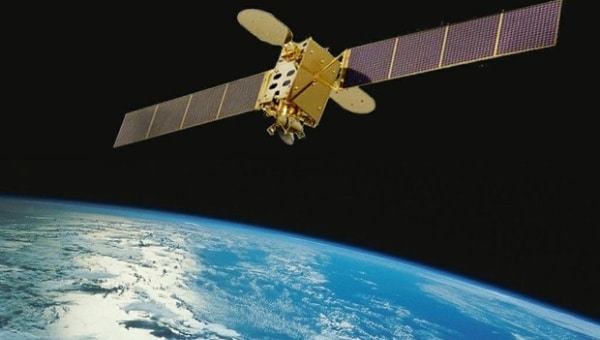Given the popularity of Samsung’s major smartphones, it isn’t surprising that speculation is running rampant well ahead of the company’s blockbuster reveals, but what is a bit surprising is just how early it has started. Already, rumblings about the presumed successor to Samsung’s Galaxy S6, the Galaxy S7, have begun in earnest. It has been revealed that the Galaxy S7 has the codename of Project Lucky. We can’t think of a more appropriate name since the number 7 is often referred to as a “lucky” number.
Similar design, but even higher quality
Tech website uSwitch and Twitter user Steve Hemmerstoffer, known as @OnLeaks, have collaborated to release high-quality renders of the Galaxy S7 based off blueprints they received.
The video shows a similar design to the Galaxy S6, which also supports a report out of Korea in early December indicating that Samsung will reuse the Galaxy S6 design for the Galaxy S7. This might be disappointing to a lot of fans, but let’s not forget that Samsung made huge strides in terms of style with the Galaxy S6. Sources claim the reason is to keep the costs down, but that doesn’t mean the Galaxy S7 won’t be a significant improvement over its predecessor. It’s believed that Samsung will concentrate on upgrading the innards such as the camera, display, processor, and RAM.
The video shows the “plus” variant of the Galaxy S7, and uSwitch says the blueprints are the same as those supplied to third-party accessory manufacturers ahead of a phone’s launch. We can’t vouch for the credibility of the renders, but with rumors and speculation flying about, it does look like Samsung might opt for an early launch date in January or February.
The plus variant looks as though it will feature a 6-inch screen, according to renders from uSwitch and @OnLeaks, and it also looks like the S7 will not feature a USB Type-C port, opting for the standard Micro USB slot. That would be unfortunate if true as USB Type-C, like that on the Nexus 5X and 6P, allows for faster data transfers and quicker charging.
The images also show that the front-facing camera has been moved closer to the edge, compared to that on the Galaxy S6. The physical home button is also more rectangular, slightly wider, and thinner than the S6. uSwitch is reporting that the S7 Plus’s button is 18mm x 5mm, while the S6’s measures 16mm x 6.7mm.
The SIM tray has also been moved further down that where it was on the S6.
Although the Galaxy S7 might look the same, Samsung might still make improvements to the quality of materials. The S6 featured a frame made of 6013 aluminum with a glass back, making it the best Galaxy S phone in terms of quality.
However, the Galaxy S7 might go one step further. A report out of China in mid-October claimed the phone will have a much stronger frame built from magnesium alloy. Samsung is also expected to utilize a similar glass back as well.
High-end specs and a return to Qualcomm’s processors
The Galaxy S series has always been known for its awesome display, powerful processor, high amounts or RAM, and high quality camera. Up until recently, premium Samsung phones always had a MicroSD card slot for storage expansion. Neither the Galaxy S6 nor the Galaxy Note 5 had a MicroSD card slot, which upset many Samsung fans, a rumor picked up by HDBlog.it says the MicroSD card slot may finally return on the S7, but the latest rumor from uSwitch says otherwise. The HDBlog.it report also claims that the screen size will be 5.2-inches and the top and bottom of it may be curved.
The Galaxy S series’ sound quality was never anything to brag about, but that might change with the Galaxy S7. A report out of China in mid-October claims that it will feature a high quality audiophile-grade Stereo D/A converter from ESS Technology.
This converter (SABRE9018AQ2M) debuted at the Consumer Electronics Show in January 2015, and is the world’s most powerful 32-bit converter. It features 129dB dynamic range and -120dB (0.0001 percent) harmonic distortion.
This report also claims that the Galaxy S7 will feature a 20-megapixel Isocell camera. However, it’s unclear whether Samsung will continue to use Sony sensors for certain models like it did with the Galaxy S6. Depending on the variant, the Galaxy S6 came with either an ISCOCELL or Sony sensor.
At the beginning of October, a report originating from Korea’s Electronic Times and picked up by Reuters, agrees that Samsung may return to Qualcomm power for the Galaxy S7, and cites anonymous industry sources. Not all Galaxy S7’s may use the Snapdragon 820, if the report is accurate — only those models released in the U.S. and China. S7 phones sold elsewhere may feature Samsung’s own Exynos chips. This wouldn’t be the first time Samsung has used both sources of power for a Galaxy phone, and in the past the decision has been necessitated by the accompanying modem, and international connectivity issues.
Two variants of the Galaxy S7 were spotted in benchmarks in early September. The first such device showed up in the Geekbench database with a model name of Samsung Lucky-LTE. It’s sporting an Exynos 8890 processor, which is believed to have an internal codename of M1 Mongoose. No other specs were revealed other than that the device is running Android 5.1.1.
The second device appeared in the AnTuTu database with the model name of Lucky. However, this model sports the Qualcomm Snapdragon 820 processor. It has already been rumored that Samsung could implement both the Snapdragon 820 and Exynos on certain variants, so these benchmarks add credence to that rumor.
The second device appeared in the AnTuTu database with the model name of Lucky. However, this model sports the Qualcomm Snapdragon 820 processor. It has already been rumored that Samsung could implement both the Snapdragon 820 and Exynos on certain variants, so these benchmarks add credence to that rumor.
Samsung has entered the 4GB RAM territory with the Galaxy Note 5 and Galaxy S6 Edge Plus, so it’s no surprise that both sizes of the Galaxy S7 are rumored to also sport 4GB of RAM.
According to internal documents obtained by a Chinese Weibo user in August, the Galaxy S7 is codenamed “Jungfrau” after a summit in the Bernese alps, and it may pack powerful new Qualcomm silicon. Specifically, Samsung’s said to be considering the Snapdragon 820, a zippy 3.0 GHz processor that bested Samsung’s Exynos 7420 — the chip in Samsung’s Galaxy S6 — in single-core performance in leaked benchmarks.
A move back to Snapdragon processors wouldn’t be unprecedented. Samsung’s decision to source its own Exynos processor for the Galaxy S6 was reportedly motivated by the Snapdragon 810’s overheating and performance issues. Qualcomm is said to have addressed those problems in the 820. It features four custom-designed, 64-bit Hydra cores built on Samsung’s 14nm process, a powerful new Adreno GPU, and far more efficient heat dissipation than its notoriously throttled predecessor.
Release date and pricing
Samsung continues to feel the pressure from other lower cost handsets, so the company might have to change things up with the Galaxy S7. Chinese analyst Pan Jiutang thinks that Samsung will likely cut the price on the Galaxy S7 in order to boost sales.
According to Jiutang, this cut could be as much as 10 percent. This means that if you paid $650 (off contract) for the Galaxy S6, the Galaxy S7 could come in as low as $585. As nice as that would be, it not at all certain that it would be enough. The Nexus 6P is priced at $500 for 32GB, and appears to be a good starting point.
The Galaxy S7’s release date remains a mystery, but it could be sooner than widely expected. Samsung’s reportedly moved to a streamlined development process, dubbed “Agile,” that aims to shave months off of its design-to-sale device cycle. The company’s shooting to finalize the S7 by December, which could translate to a early 2016 launch. Korea Investment predicted in early December that Samsung will launch the Galaxy S7 at Mobile World Congress in late February 2016. However, ET News reported in mid-October that Samsung could announce the Galaxy S7 in January, one to two months earlier than normal.
Camera may be major selling point
Samsung filed a trademark application for “Britecell,” and according to the listing, it’s an image sensor for mobile phones. It also sounds very familiar to Isocell, which is Samsung’s current sensor technology. Isocell forms a physical barrier between neighboring pixels, thus allowing more light to be captured. The name Britecell obviously is a play on the word “bright,” which would indicate that this sensor also deals with collecting more light.
A rumor in early November indicated that Samsung might ditch higher pixels in favor of better image quality. While the Galaxy S6 had a 16-megapixel camera onboard, the Galaxy S7’s camera could actually drop to 12 megapixels. However, the sensor size could increase to 1/2.0” (from 1/2.6″) and could be equipped with dual-PD (dual-photodiode) technology. The increased sensor size would allow more light while the dual-PD technology would offer a more accurate auto focus through phase detection. This could be exactly what Britecell is referring to, and if so, there is a good chance this rumor is true.
The move to a larger sensor would be similar to what Google did with the Nexus 5X and Nexus 6P, in that those phones have 1/2.3″ sensors. Ironically, both of those phones are equipped with 12-megapixel (actual is 12.3) lenses too. At present, the Nexus 5X and Nexus 6P have the largest sensors ever on a smartphone, but the Galaxy S7 would take the crown if this rumor is true.
It should be noted that a contrary rumor published on the Chinese social network Weibo at the beginning of November asserted that Samsung is talking to Sony, with the intention of securing the IMX300 camera sensor for use on the Galaxy S7. The IMX300 is apparently the same sensor used in the Sony Xperia Z5, and is rated at 23 megapixels. However, Samsung apparently wants to use both its own Isocell 20-megapixel camera sensor, and Sony’s sensor for the S7, meaning it’ll have to bring them both into line, megapixel-wise, to avoid differences in models.
The rumor is unconfirmed, and the source is unknown. Samsung used a mix-and-match strategy for camera components — with Sony — on the Galaxy S6, so the decision to use two different camera sensors in the S7 range wouldn’t come as a surprise. Sony has also acquired Toshiba’s CMOS sensor factory, increasing its ability to produce camera sensors. These two factors indicate that the rumor carries some weight.
Before this, Chinese suppliers reported in August that Samsung had begun sourcing components for a dual-camera array. Unlike the primitive twin shooters on the HTC One M8, Samsung’s implementation is said to focus on low-light performance and “accuracy.” One lens will supply color information, and the other will focus on brightness, sources claim. The device will then combine the metadata to produce photos up to “double” the quality of single-camera shots. In a move which may belie Samsung’s intentions, the company’s Exynos 7420 shipped with dual-camera support enabled.
Some sources inside South Korea are unsure if this tech will be used on the Galaxy S7, however. Samsung may have plans to test the waters with a dual-camera setup on another smartphone shortly after the Galaxy S7 launch. Samsung execs want to see how the market responds to a small batch of dual-camera phones, before implementing the tech inside the flagship smartphone, the sources say. Samsung reportedly has an end-of-year goal for the dual camera, meaning if it does change its mind, it will still have a few months before the Galaxy S7 launch to add the dual cameras to its flagship phone.
Two display sizes and Force Touch
Samsung’s next S phone could come in two sizes just like the Galaxy S6, the renders from @OnLeaks and uSwitch certainly show a ‘plus’ variant. And now there are even more rumors about the technology that’ll sit behind the screen. The I Ice Universe Weibo account hinted that Samsung may follow Apple’s lead and add Force Touch to its next flagship phone. The Galaxy S7 will reportedly pack a special tech from Synaptics that’s called ClearForce. Much like 3D Touch on the iPhone 6S and Force Touch on the Apple Watch, ClearForce technology registers a firm press differently than a light tap. On the Galaxy S7, this tech could be used to bring up contextual menus and other cool features, CNet reports.
A patent published by the Korean Intellectual Property Office in mid-October reveals that Samsung might bring force touch technology to the Galaxy S7 onscreen keyboard. Samsung’s implementation uses voltage to detect the force of touch, which in turn determines the output. For example, pressing the “a” key lightly would register a lowercase “a,” while a harder press would output an uppercase “A.” The patent further reveals that this technology could also be used in a keyboard accessory such as a flip-style cover with a built-in keyboard.
Another report indicates that the Galaxy S7 will come in two sizes: 5.2 inches and 5.8 inches. If this rumor is true, it would give credence to the @OnLeak’s render, and it would mark the first time that Samsung offered two display sizes of a Galaxy S phone. Apple did something very similar with the iPhone 6 and iPhone 6 Plus, as did Google with the Nexus 5X and 6P, so we wouldn’t be surprised if Samsung goes in this direction.
Now that Sony debuted the first smartphone with a UHD 4K (3,840 x 2,160 resolution) display, Samsung may consider following suit. A report in early September indicated the Galaxy S7 is likely to sport a 4K display, but it’s not clear if both the 5.2-inch and 5.8-inch variants will get such treatment. It’s possible that Samsung will reserve this high end display for the larger model, which would put it at 759 pixels per inch. If Samsung does opt to offer a 4K display on the 5.2-inch model, it would come in at a whopping 847 pixels per inch.
Samsung’s got a lot riding on the Galaxy S6’s follow-up — it badly misjudged demand for the Galaxy S6 and Galaxy S6 Edge earlier this year, leading to dips in year-on-year profit. It won’t want to make the same mistake again. In the meantime, we’ll keep you updated here.
Source :Yahoo Finance
BREAKING NEWS | HEADLINE NEWS | NEWS | DAILY NEWS | WEEKLY NEWS
WORLD NEWS | INDONESIA NEWS | BALI NEWS
















Add a comment